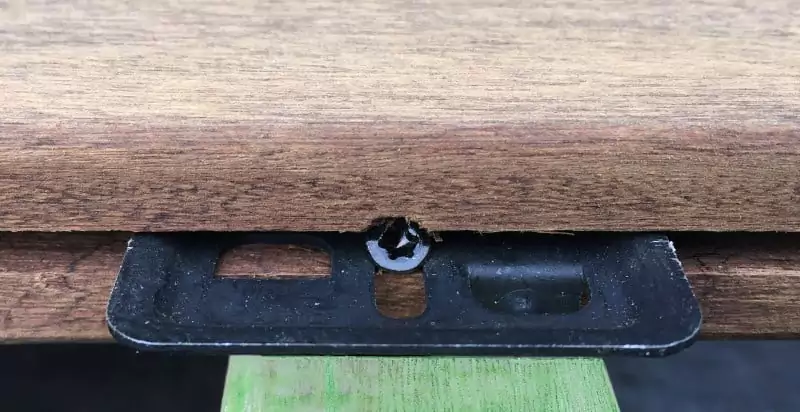
Related Posts
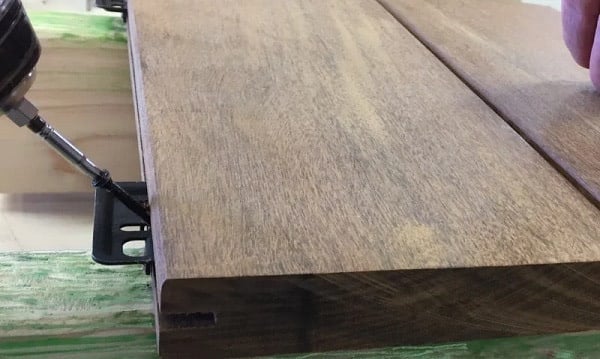


Hidden deck fasteners are a nice way to keep the surface of your deck looking clear and unencumbered. But they are not the right fastener for all decks. In fact, using hidden deck fasteners inappropriately is a formula for failure. Some deck projects require the stronger fastening power of face screws. Where should you and where shouldn’t you use hidden deck fasteners?
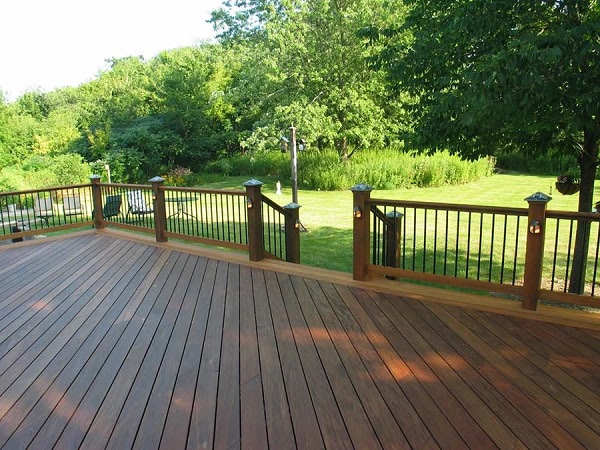
Take Your Time and Learn What is Important for Best Decking Performance
It’s important to understand that exterior hardwood decking will move (expand and contract). All exterior woods move a lot, especially initially. That’s why proper on-site acclimation of exterior wood is so important – before installation. Then wood moves seasonally afterwards (based on moisture content).
Hidden fasteners work best where there is lots of clearance and adequate ventilation to eliminate unwanted moisture. For other projects, fastening your deck boards with screws, may be a more secure and better option.
Suitable Projects for Hidden Deck Fasteners
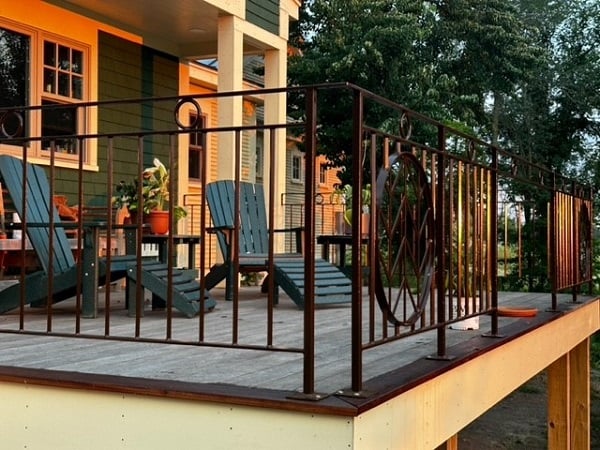
Best Size Deck Boards for Hidden Fasteners
Deck boards will expand and contract width-wise throughout their usable lifetime. Narrower deck boards expand less than wider boards. So, using narrower deck boards helps control the size of the space between deck boards. Your deck will look better – and perform better.
Mataverde concealed deck fastener works great for a sleek look
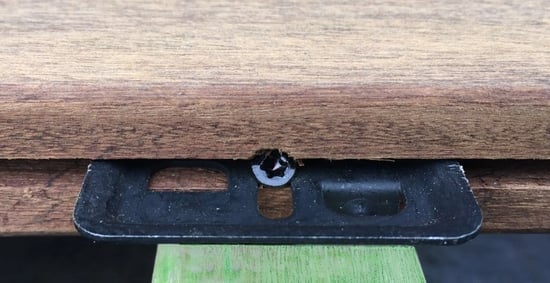
The Mataverde Hidden Deck Fastener is black for lower visibility, stainless steel for higher strength and durability, and longer for superior holding power.
Request a free hidden deck fastener sample today:
Where Shouldn’t You Use Hidden Deck Fasteners?
If your deck does not meet all the requirements below, don’t use hidden deck fasteners. In fact, fix as many moisture related problems before constructing any outdoor deck. Moisture is the biggest enemy of all exterior woods. If you can’t control the moisture below your deck, natural wood deck boards are very likely to ‘cup’ and behave poorly.
There are many projects where hidden fasteners should not be used. For those projects, deck screws work best. Here's a short list or decks where you should not use hidden deck fasteners:
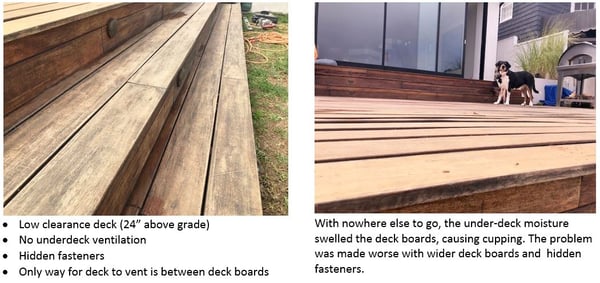
Hidden deck fasteners can be a beautiful design element for a deck project - if your deck qualifies. Avoid potential problems. Make sure your deck design meets the requirements before investing in a beautiful deck.
We hope you enjoyed this article. Please visit MataverdeDecking.com for additional information about hidden deck fasteners, decking installation, hardwood decking options, deck galleries and more.
Need some help finding the best decking for your project?
Download the "Ultimate Guide to Selecting the Right Decking" today
Looking for some great deck design ideas? Get inspired!
Download the "Deck Design Ideas Book" now
61 pages with over 150 real deck projects and deck ideas


